Design Process
Initial Idea - Diet Holo
Team Placebo receives a theme of "Repairing Self" as the theme of the project. Initially, we developed a concept idea to repair self physically. Diet Holo intends to help people in their diet. The user of the installation will be able to scan certain food items that they think they will eat for the day. Then, they will be shown an overview regarding the foods that they have scanned, and total calories intake that they will receive.
User can alter the total calories by burning it using the physical steps. After using the installation, user will be able to know how much exercise that they need in order to achieve daily calories goal if they decided to eat all of the foods that they have selected. Team Placebo encountered several problems regarding the idea, mainly about making unique and meaningful physical interaction with the user. The team also received a feedback regarding different diet specifications for different persons.
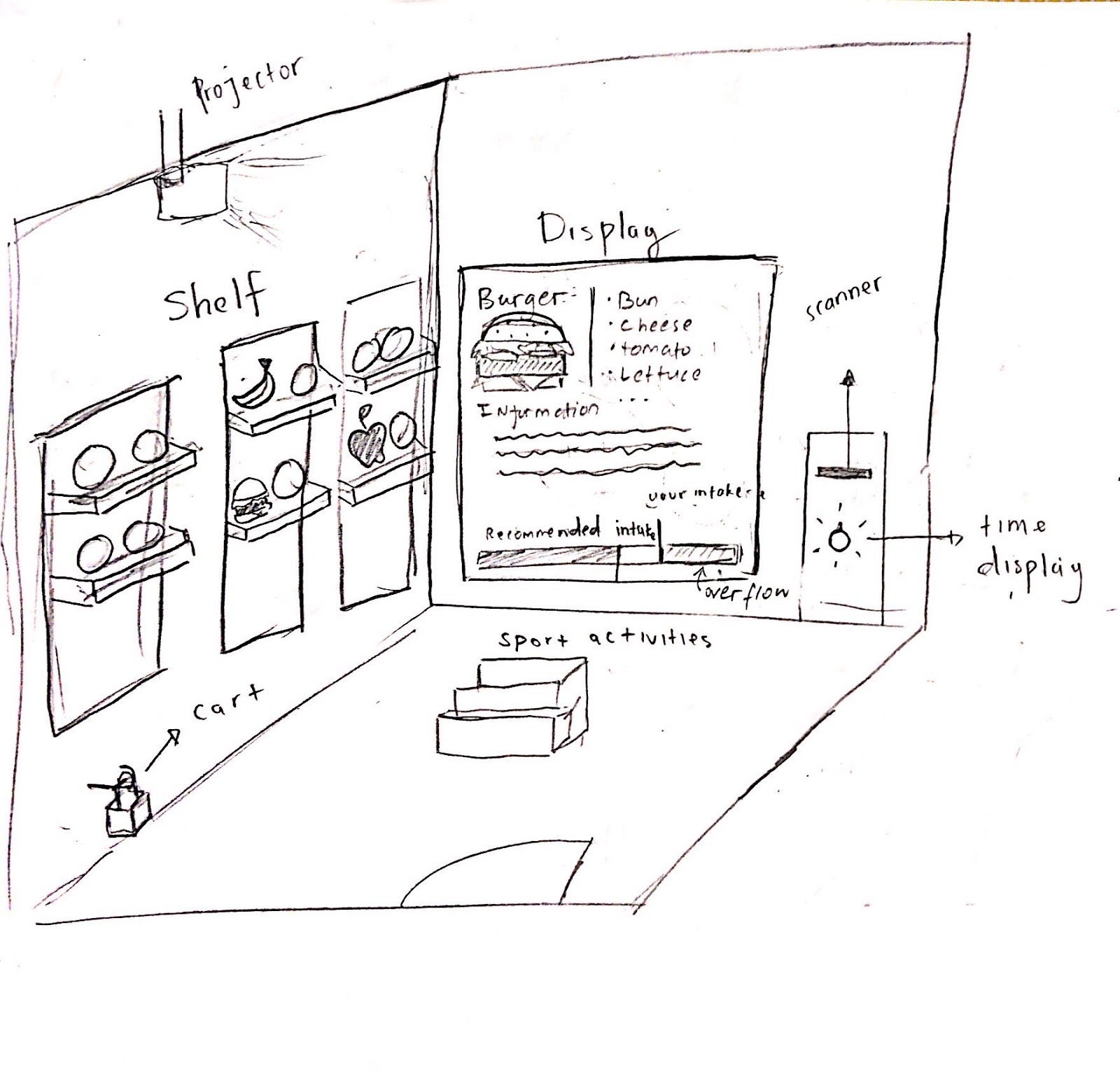
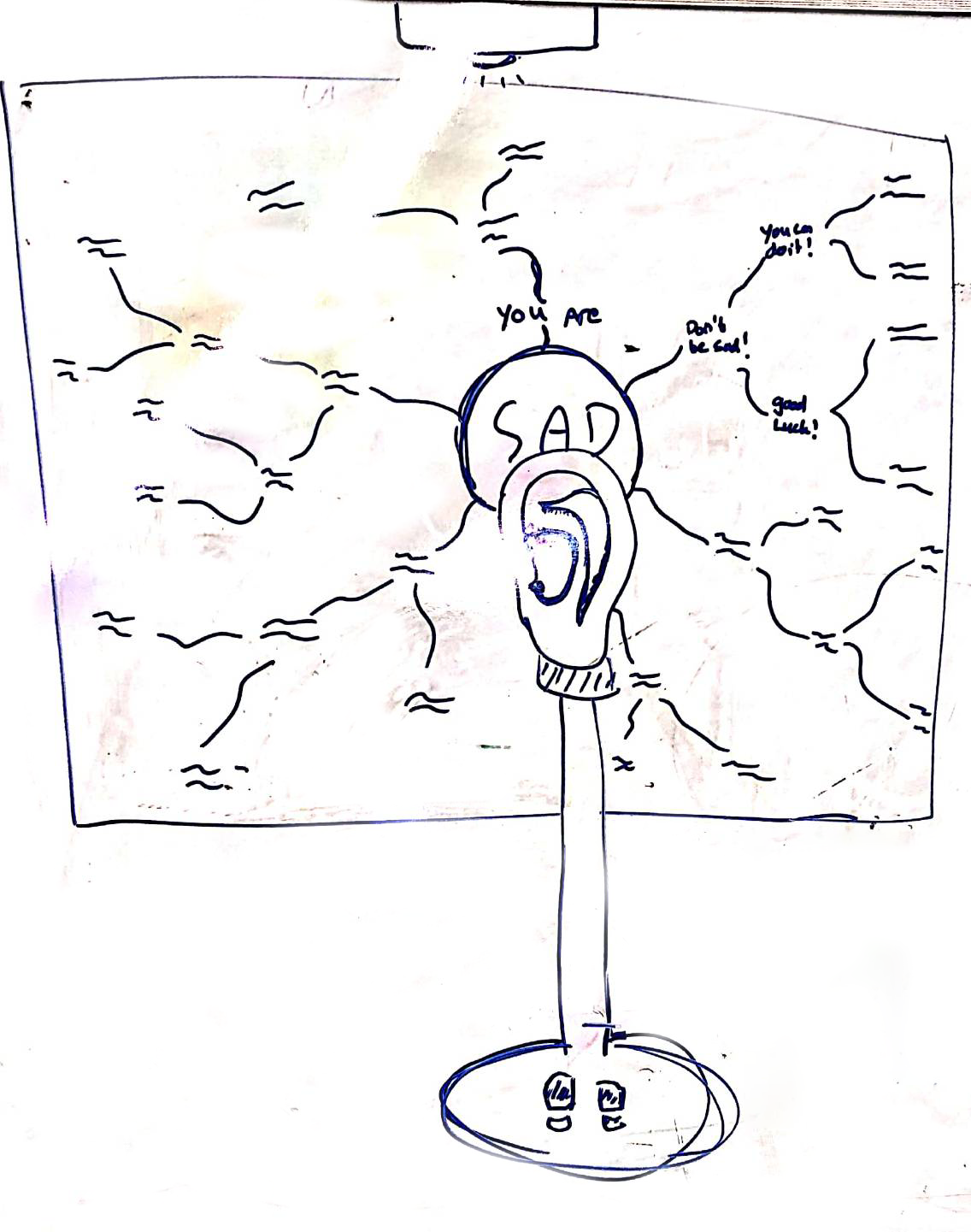
Hear Me Out
After trying to iterate on the initial concept for several times, the team decided to scrap the idea and change the direction of the project. The team decided to explore the realm of repairing self mentally. With that in mind, the team conducted an interview with one of the board members of a mental health movement in Indonesia, and a focus group discussion with UQ's School of Communication students. Based on the interview and the discussion, we found out that people want to be acknowledged when they are feeling down. Although the method to cheer themselves varies on each individuals, most of them agree that they felt better when they share their problems with other people.
We created a new concept for the project, where people would be able to share their stories to repair themselves emotionally. People would be able to talk to the installation, and it will show the emotion that the user is currently feeling based on their stories. The installation will also show supporting words from other users on the screen to make the user feel that there are other people out there that cares. After using the installation, user will be able to leave a supporting message for other people
The Untold - Initial Sketch
The team thought that the interaction between the user and the project is lacking. Currently, user would only be able to tell their stories and see the emotion that they are currently feeling on the screen alongside with supporting messages from other users. We want the user to feel better after leaving the installation, and we think that Hear Me Out would not be able to achieve that. Therefore, we decided to improve the current idea by iterating it.
The Untold is the product that we came up after iterating and improving Hear Me Out's basic concept. We changed the interaction to be multi-users interaction, where the user would be able to communicate with each other in real-time. In The Untold's initial sketch, the basic idea to relay the user's emotion from their stories still exists. Although we were not sure about what kind of interactions that the two users could have between each other.
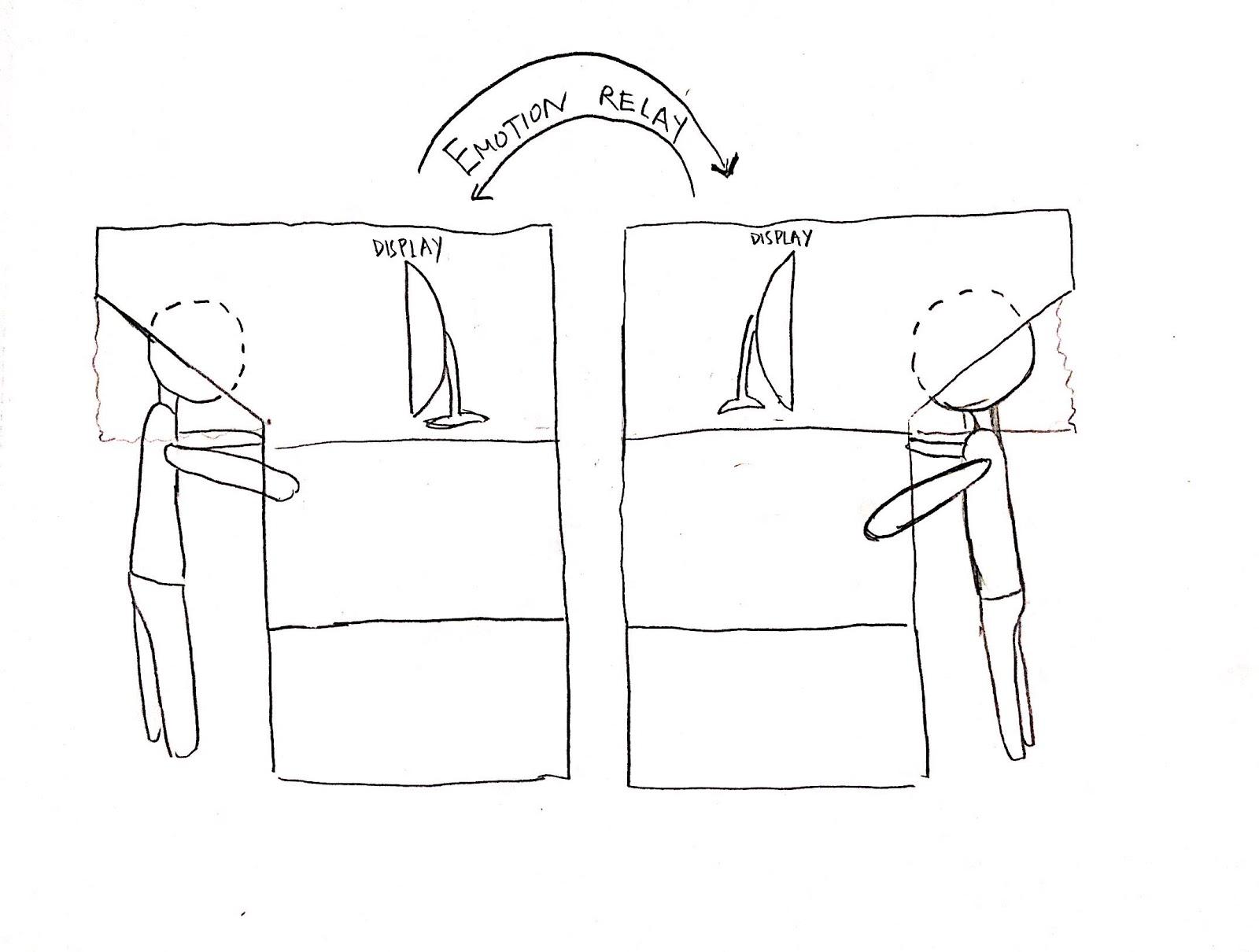
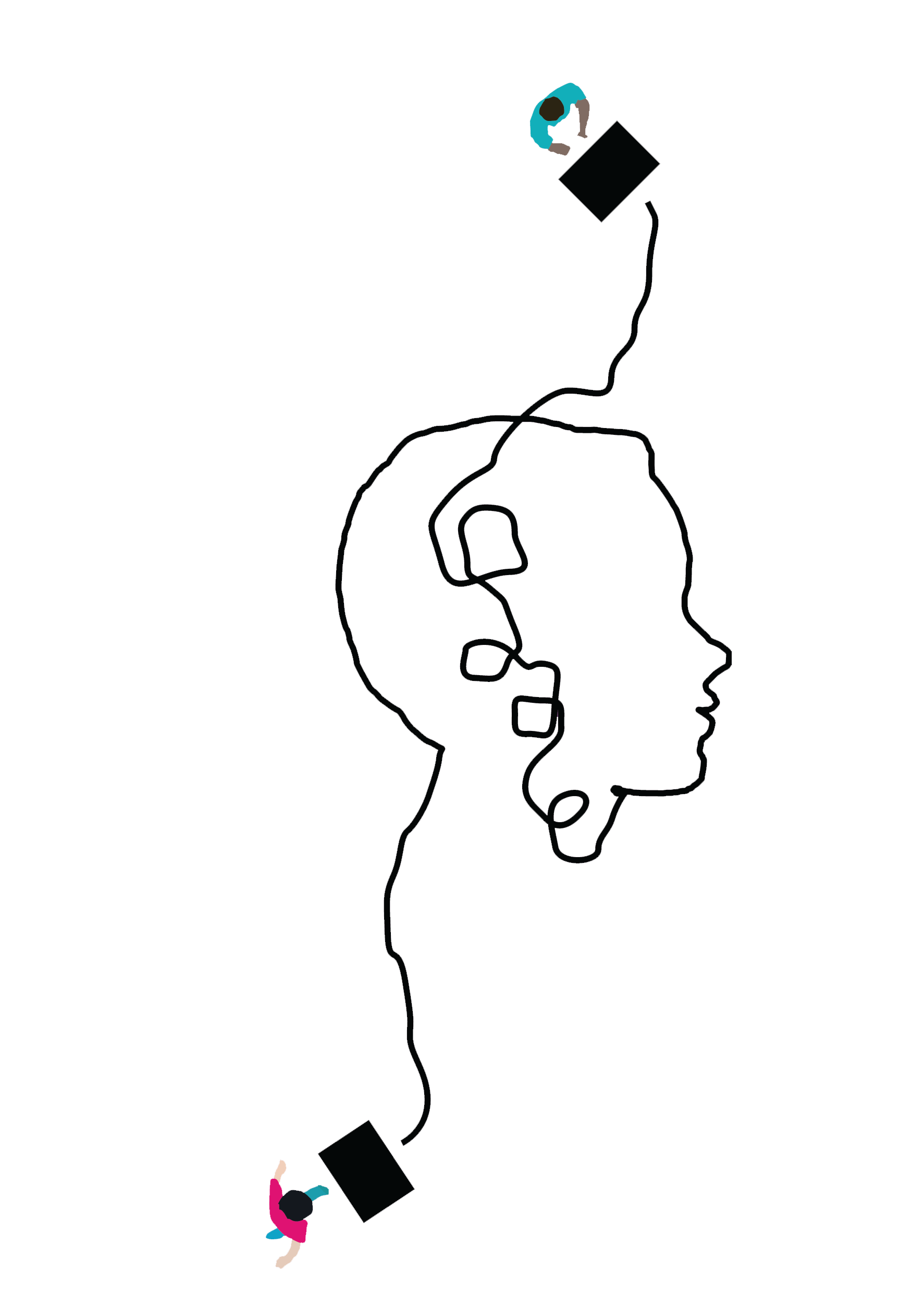
The Untold - Final
Team Placebo conducted an open discussion with UQ's school of psychology students regarding The Untold and its current state. We asked for their opinions and insights regarding how to handle anxious people. From the discussion, we found out that acknowledgment from other people is crucial for them. When people are telling stories to other persons, often times they do not want answers or guidance from them. They just want to heard and acknowledged by the other party. They also mentioned that sometimes people have a hard time to share their problems with the people who are close to them in fear of being judged. Some people prefers sharing their stories to a stranger, because they will not be able to judge them.
We improved The Untold based on the discussion that we conducted with the psychology students. In the final version of The Untold, people will be able to share their stories anonymously and receive general feedback from other people. To ensure anonymity, the Listener would not be able to hear the stories that the Conveyor told. Instead, they will be able to see the emotion that the Conveyor felt and give feedback based on it. The interaction between both the Listener and the Conveyor will be done in real-time. The Conveyor will also be able to hear feedback from several Listener recordings to make the Conveyor feel that there are many people that cares for them.
Development Process
My role in the team was the developer of the project. I created the basic stacks and requirements for the project. For the project, I decided to use Python as the main language of the program. The reason behind this is because most of the libraries that we need are available on Python. Then, for the hardware part, I choose to build The Untold on Raspberry Pi as they support Python language. My main contribution to the project was to develop the underlying logic of the program, and create a connection between the two booths.
First, I created the main logic by developing different states of the program. The first state of the program will be activated when the Conveyor initiated the interaction. Then, after the Conveyor finished telling their stories and the emotion has been captured, the state of the program will move to the second state. In the second state, the Listener will be able to give feedback based on the emotion that the Conveyor felt. After the feedback has finished recording, the state of the program will continue. On the final state, the Conveyor will be able to hear feedback from the Listener.
In order to ensure that both devices are always in the same state, I created a master database that will control the state of The Untold. This database is uploaded into a Heroku server. Then I created an API on the Heroku server to retrieve and update the database. To detect the emotion that the user felt, The Untold uses Tone Analyzer API that is developed by IBM. Ovan worked on emotion detection and controlling the NeoPixel colors based on the emotion. I created an AWS S3 bucket to store the feedback that the Listener has created. The feedback are grouped based on the emotions. PyAudio library is used to play and record sounds on the program. Lastly, Github is used for version control of The Untold.
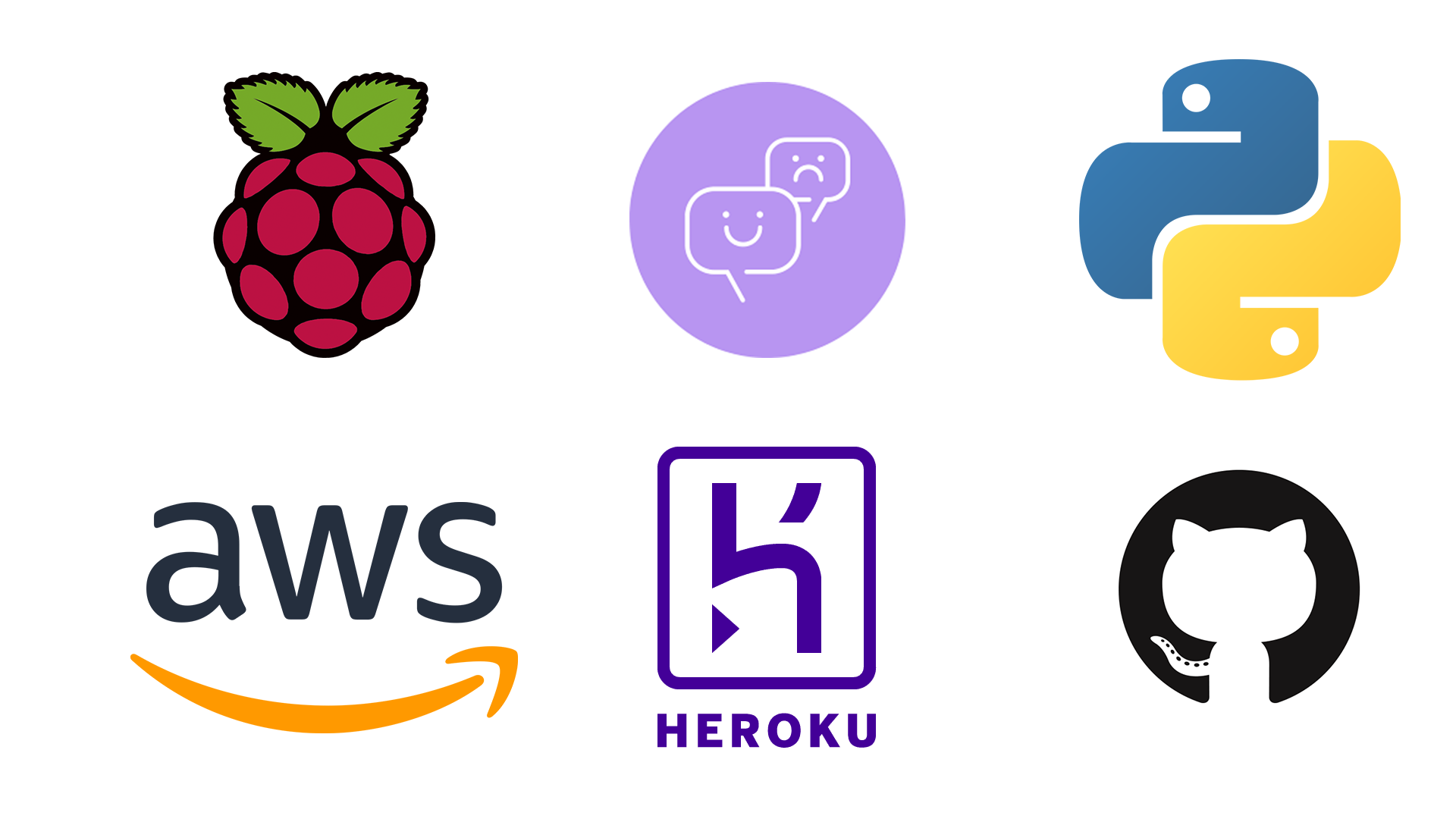
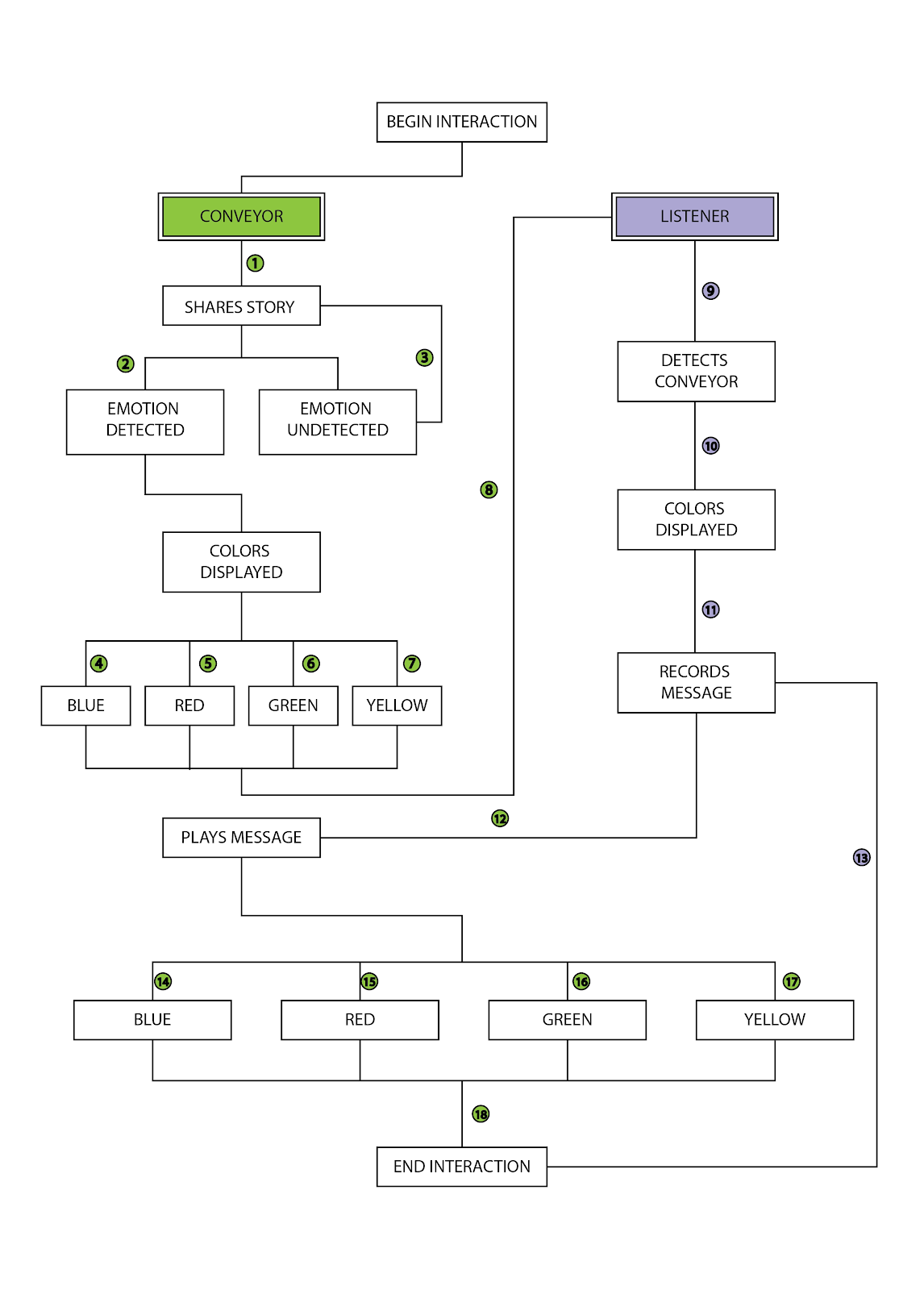
To enhance the experience that the user felt, a sophisticated interaction diagram is created. This interaction diagram is based on the states that I created and dictates the flow of The Untold. The Untold uses a voice recording in order to guide the user through the use of the installation. The numbers on the interaction diagram marked which audio files to play during the interaction.
Exhibition
The Untold was showcased to the general public during the Interaction Design Exhibit 2019 on The Edge. In the exhibition, The Untold successfully attracts the curiosity of many people. The Untold succeed to achieve its main goal to repair the user's emotional state. Visitors who tried The Untold during the exhibition stated that they felt better after using The Untold, as they felt that there exist people who care about them. Although, there are several problems that became visible during the exhibition. The real-time interaction between the Conveyor and Listener require both booths to be filled at the same time. In real practice, it might be harder for both person to use the booth at the same time. The waiting time between each state to change also takes too long. Some visitors that use the Conveyor side thought that the interaction has finished after their emotion has been detected.
Overall, The Untold achieved all of its success criteria, which are interactivity, engagement, usage understanding, and data understanding. The Untold achieved excellent marking for interactivity and engagement, as most users interacted with the installation for a long time and engaged with it. Usage understanding and data understanding only achieved satisfactory marking as there is a small portion of the users that mistranslated the emotion color.

Picture taken and edited by Judit Losh
Supporting Materials

The Untold Flyer - Front

The Untold Flyer - Back

The Untold Poster

The Untold Carry On

The Untold Flyer - Front

The Untold Flyer - Back

The Untold Poster

The Untold Carry On